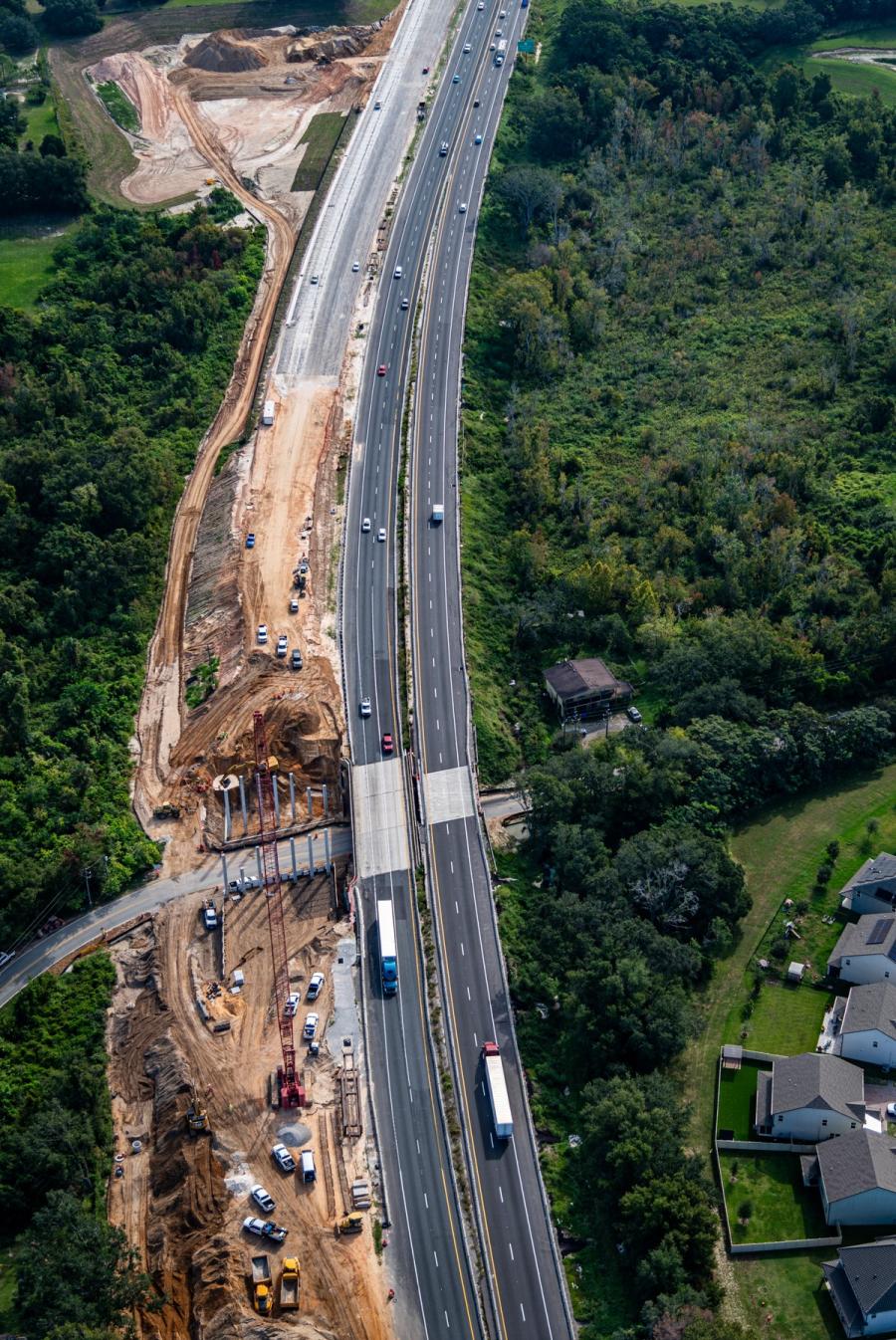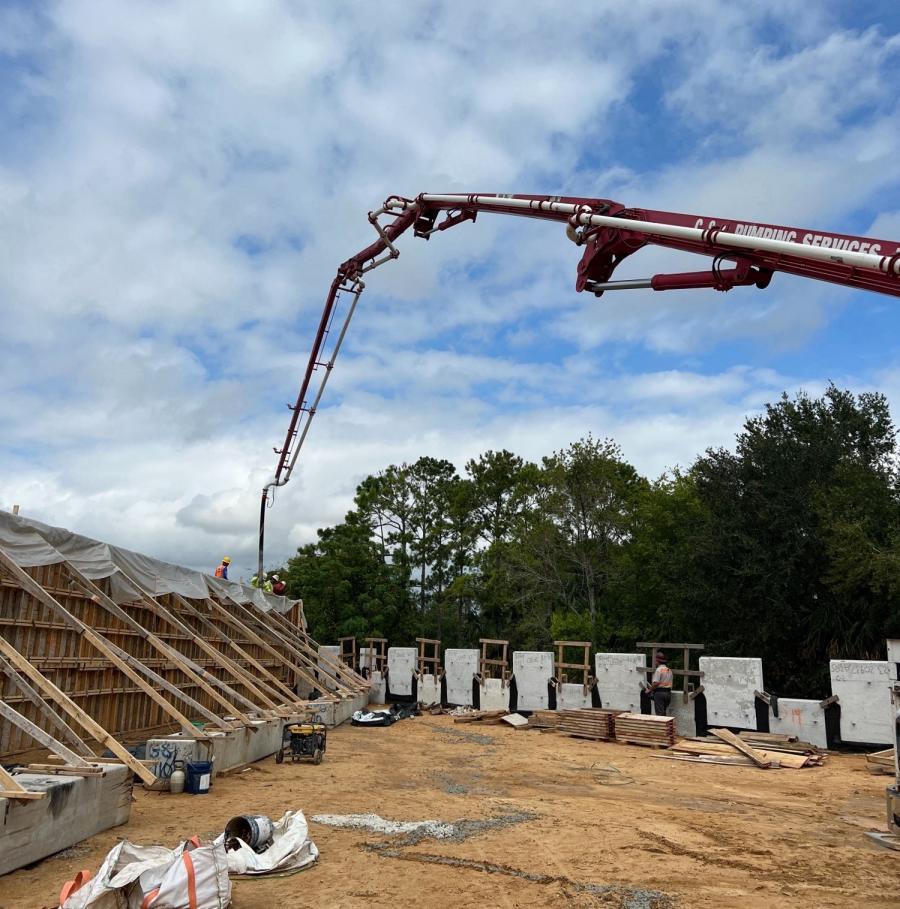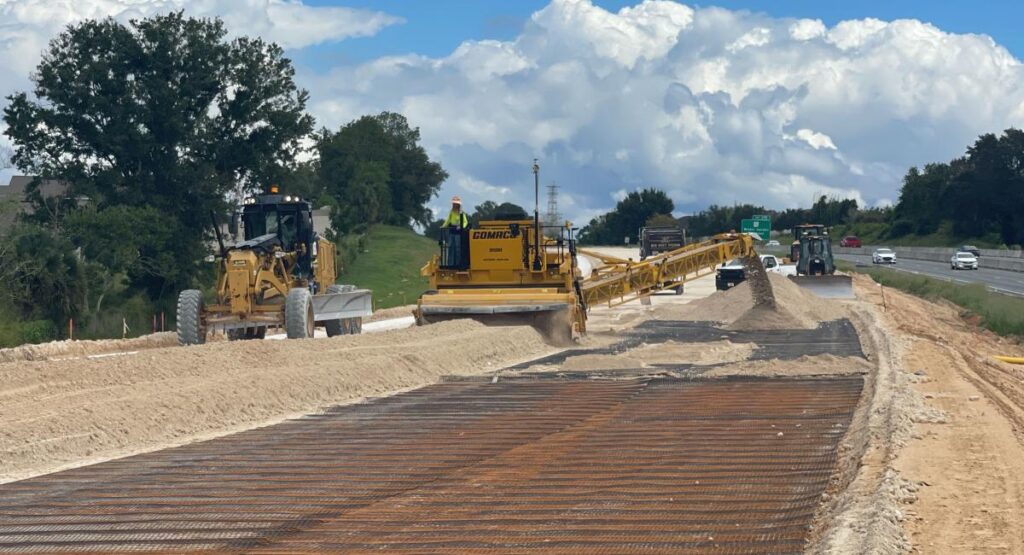Photo courtesy of FTE
Base on Geomat along Florida’s Turnpike.
Florida’s Turnpike Enterprise aims at enhancing connectivity, improving driver safety and facilitating pedestrian access to nearby communities through its commitment in Orange and Lake counties with a $162.3 million project to widen Florida’s Turnpike/State Road (SR) 91 from Clermont/SR 50 (milepost 272) to Minneola/Hancock Road (milepost 279). The project, currently in the construction phase, began in August 2021 and is anticipated to be completed by mid-to-late 2026.

Photo courtesy of FTE
This project will expand the Turnpike mainline from two to four lanes in each direction, enhancing connectivity. All bridges within the project limits will be replaced, including the bridges at County Road (CR) 438, CR 455 and West Orange Trail, and widening the bridges over Jones Road, Old Highway 50 and Blackstill Lake Road. Additionally, the project will replace existing toll booths and canopies at the Clermont/SR 50 entrance and exit ramps with new electronic tolling gantries and buildings, as part of the Enterprise’s ongoing pursuit toward more efficient business operations and customer convenience. Two new roundabouts on either side of the CR 455 bridge enhance traffic flow on CR 455 and Old Highway 50.
Prioritizing safety, the project incorporates new highly-reflective pavement markings, signage, guardrail, lighting and intelligent transportation systems. Pedestrian access also is a key feature with the installation of walkways on the CR 438 and CR 455 bridges and replacement of the West Orange Trail bridge. The new Fosgate Road bridge near the northern project end will allow Lake County to expand its roadway network to provide additional access to residents and growing communities in the area.
The project is at 46.1 percent of contract time and is ahead of schedule. This achievement is attributed to the collaborative efforts between the contractor, Jr. Davis Construction Company Inc., the Construction Engineering and Inspection team, JBS Engineering Technical Services Inc. and the Enterprise, notably through a proactive Alternate Traffic Control Plan that plays a crucial role in the project’s anticipated expedited completion. Orlando-based DRMP Inc. provided structural engineering, geospatial, stormwater management and ecological services.
“To date, there have been 44 subcontractors who have worked on the project and contributed to its success,” said Kerry French, communications outreach coordinator.
Acknowledging the potential impact on nearby residents and businesses, construction is being carried out during both daytime and nighttime hours to ensure expedited project completion. The project team maintains an open line of communication with the communities, addressing questions and concerns promptly. Lane closures are strategically scheduled during off-peak hours to minimize traffic congestion and disruptions.
The Enterprise and project team work together to ensure impacts to the surrounding residents and travelers are minimized, and that the project is completed within project time. Some examples of the benefits to this teamwork include various project successes. The Oakland Avenue and West Orange Trail bridges were reconstructed and opened to the public on time. The Bike Trail along Old Highway 50 and CR 455 was scheduled to be closed for approximately six months during the phased construction of the newly constructed roundabouts and elevation change of the existing roadways but reopened in two months. The CR 455 bridge was closed in late March 2022 and reopen early March 2023, meeting the commitment made to the community.
The project underwent the Enterprise’s extensive project development process, including planning, which involved the efficient transportation decision making (ETDM) process; corridor feasibility studies and alternative corridor evaluation (ACE) studies; project development and environment (PD&E) study; design; and right of way acquisition.

Photo courtesy of FTE
Despite industrywide challenges such as long lead times and product shortages, the project has experienced minimal delays. The early procurement and stockpiling of materials by the contractor mitigated potential setbacks. Environmentalists were hired at the beginning of the project to ensure safe removal and relocation of animal species from the project construction area. Bats were removed from all bridge structures, sealing any entry points to ensure they could not reenter the structure prior to demolition.
“Environmental considerations, including the relocation of 55 gopher tortoises, showcase the Enterprise’s commitment to responsible construction practices,” said French. “The gopher tortoises were removed following authorized capture methods and silt fencing was installed to keep tortoises from entering the worksite after removal.”
Material usage on this project so far includes 660,000 cu. yds. of embankment; 203,000 tons of asphalt; 9,300 cu. yds. of concrete; 53,000 linear ft. of concrete barrier wall; and 30,000 linear ft. of curb and gutter. The project employs cutting-edge technology and equipment for monitoring and installation, ensuring efficiency and precision for wick drains, mass concrete temperature reading meters, retaining wall soil anchor testing, inclinometers and piezometers for surcharge movement monitoring, and GPS surveying.
“With 100 to 175 active workers on-site at any given time, the collaborative efforts of the Enterprise and project team ensure that impacts to the surrounding residents and travelers are minimized, and the project is completed within project time,” said Kerry.
As the project advances, it stands as a testament to the industry’s commitment and crucial role in infrastructure development and safety. The widened Florida Turnpike will continue to serve as a vital roadway in Central Florida, promoting enhanced connectivity and mobility. CEG
Read the full article here











